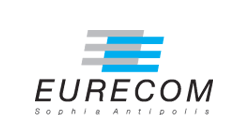The conventional federated learning (FedL) architecture distributes machine learning (ML) across worker devices by having them train local models that are periodically aggregated by a server. FedL ignores two important characteristics of contemporary wireless networks, however: (i) the network may contain heterogeneous communication/computation resources, and (ii) there may be significant overlaps in devices’ local data distributions. In this work, we develop a novel optimization methodology that jointly accounts for these factors via intelligent device sampling complemented by device-to-device (D2D) offloading. Our optimization methodology aims to select the best combination of sampled nodes and data offloading configuration to maximize FedL training accuracy while minimizing data processing and D2D communication resource consumption subject to realistic constraints on the network topology and device capabilities. Theoretical analysis of the D2D offloading subproblem leads to new FedL convergence bounds and an efficient sequential convex optimizer. Using these results, we develop a sampling methodology based on graph convolutional networks (GCNs) which learns the relationship between network attributes, sampled nodes, and D2D data offloading to maximize FedL accuracy. Through evaluation on popular datasets and real-world network measurements from our edge testbed, we find that our methodology outperforms popular device sampling methodologies from literature in terms of ML model performance, data processing overhead, and energy consumption.
Device sampling and resource optimization for federated learning in cooperative edge networks
IEEE/ACM Transactions on Networking, Vol.32, N°5, October 2024
Type:
Journal
Date:
2024-07-18
Department:
Systèmes de Communication
Eurecom Ref:
7957
Copyright:
© 2024 IEEE. Personal use of this material is permitted. However, permission to reprint/republish this material for advertising or promotional purposes or for creating new collective works for resale or redistribution to servers or lists, or to reuse any copyrighted component of this work in other works must be obtained from the IEEE.
See also:
PERMALINK : https://www.eurecom.fr/publication/7957



